DAILY PRACTICE
During my reading and research for this first part of UVC 2, I became aware of ideas around a practice of doing things repetitively, whether it is deliberate or unintended, action that flows from it.
I love walking in nature……where I collect ‘physical objects’. Do I do it out of habit? What pushes this action to find objects and collect them?, are some of my thoughts. I have left many a rock, piece of wood, plant species in gardens where I have made my home, or had a temporary stay ( bush camp or lodge, preferably). I have always had the idea that these objects call me to pick them and take them with me. I travelled from Dubai during March 2020 to be in SA for lockdown, and apart from luggage, I also packed found objects, ranging from a butterfly, dried seagrass to feathers I collected in Dubai. Most of my little collections are reminiscent of moments in a place and a memory of something that I thought I need to take along… I believed it is for when this transpires into something more creative. In my walking around the old farmstead I have been collecting pieces of pottery shards, a dove carcass and some old rusted iron pieces.
I decided to paint these objects, do it daily and in different groupings, and keep a note book with it. My idea as an end product is a collage with circles of small paintings, combined with mirrors in some of the circles. I also consider framing them as separate fragments, dated to show the intent for the process. From reading Fiona Tan (Tan, 2003:53), I understand it is about (how), the intent, by making a resolution, when starting a practice. I am also influenced by the ideas of Deleuze in Repetition and Difference (Deleuze, 1994)
On Instagram a local artist’s feed caught my attention and I need to take this with me, it inspired me to make a short video of the found objects I have been putting in a window sill in the area where I created my temporary workplace.

Day one: Friday morning 24 July 2020. Notebook: I chose objects.
I prefer a limited palette and attempt to represent form and colour. The little shell shape was hard to capture. Take care to be learning from this practice….be patient, take care when I use the brush to make a gesture in paint….think before I do.
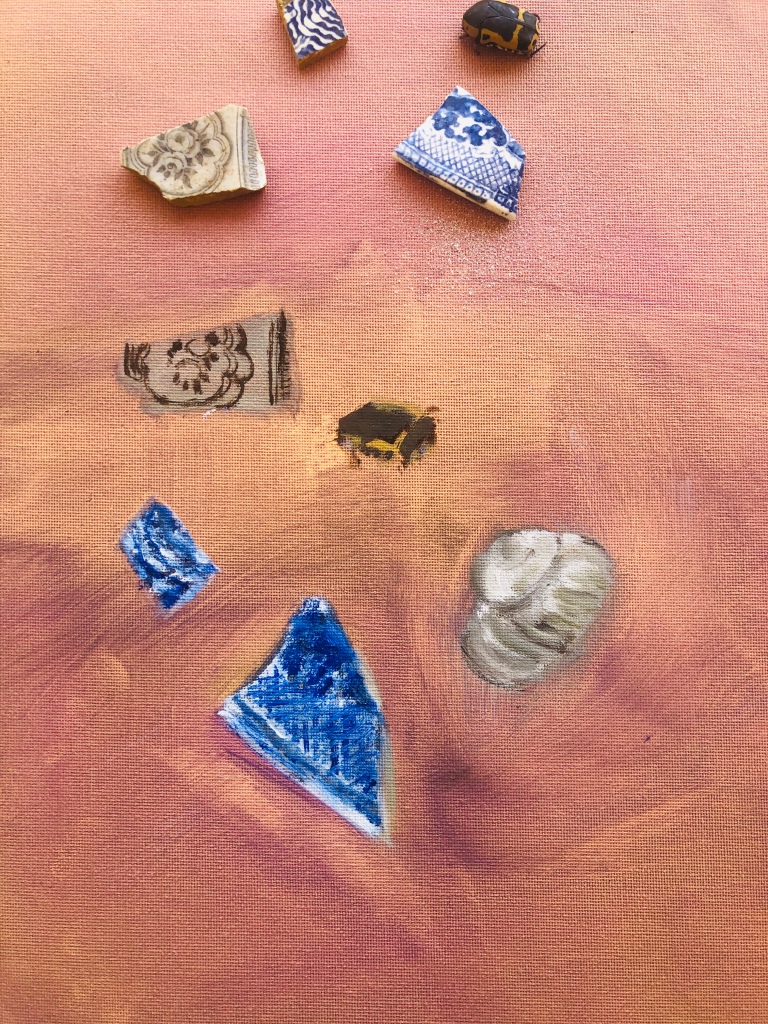
Day two: Saturday morning 25 July 2020. Notebook: I observe.
I made circles on canvas paper to paint objects inside; the idea of making an assemblage is starting to take form. Again a sea shell makes me struggle to represent form. I enjoyed the bird skull and think it could work in other paintings of still life. I should not focus on the expected outcome of a work of art, but on the learning taking place whilst I paint. I can alway repeat the process, or discard the work. I remember reading about a photographer who started watching bugs under his son’s amateur microscope, and how this translated his work into macro photography of bugs. I want to look at the detail of the bug. Observation is an active pursuit; yesterday I read about an artist who remembered a tutor advising the students, that in order to understand the subject, you have to walk around the subject.
Is practice also a process repetition with the goal of getting better at?

I was thinking of research for POP 1 on the work process of artist Veja Celmins who place all importance on the labor of making in her pencil drawings of the ocean, or the rocks, which she describes as “ unsayable.” This “unsayability” can be understood as the transference of meaning from one object to another (the work of art). Like the work of a scribe, Celmins’s intensive labor accrues meaning through concentration. One small painting, for example, took Celmins over a year to make. I see the value of such a repetitive practice in terms of accruing skills, but also to solidify, clarify and illuminate the concepts behind my work. On Kawara in his series, Today 1966-2013, would destroy a work if it was not finished in that day. (Guggenheim)
2 Take Up Your Bow With An Obedient Spirit
4 Take Care With Each And Every Shot
8 Make The Target Your Only Goal
Day three; 26 July 2020. Notebook: I read
I read Kokoro No Yoi (Saito Chobo, 1968) which translated it means, Preparing your Mind. See above list. It is Sunday, still lockdown here on South Africa and I indeed have the time to work with intent so that my learning is effective. From the reading I quote: “ If you do this carelessly it is harmful and profitless; you must bear down and shoot each shot with firm resolve. You must not make the mistake of thinking that shooting carefully means to experiment at random. Shooting is a practical skill. “Knowledge follows action” is how kyujutsu should be. You must practice over and over again just as you have been taught.” (1968)

Day four, 27 July 2020. Notebook: I learn
Let me ( mind, body,practice) be open to learning!
I want to do the shell again. I love how the light reflects on parts of it…looks like pearl. Focussing on my skill of observation and replicating….will doing it over and over again…improve my perception skills, and then the hand will follow spontaneously. Am I thinking too much? How do I loose my ego? We learn by habituation…..repetition.

Day five, 28 July 2020. Notebook: I replicate.
I want to remain silent of mind and process.

Day 6, 29 July 2020.. Notebook: I like
I have favorites – the blue Delft shards and the seashells. Both remind me strongly of my childhood in Cape Town. The blue delft is my Cape/Dutch heritage and the shells are childhood memories of playing in tidal pools. Sometimes there are ‘things’ locked into these memories, secrets, knowledge? Is layering part of what I like? Below is todays painting in progress.
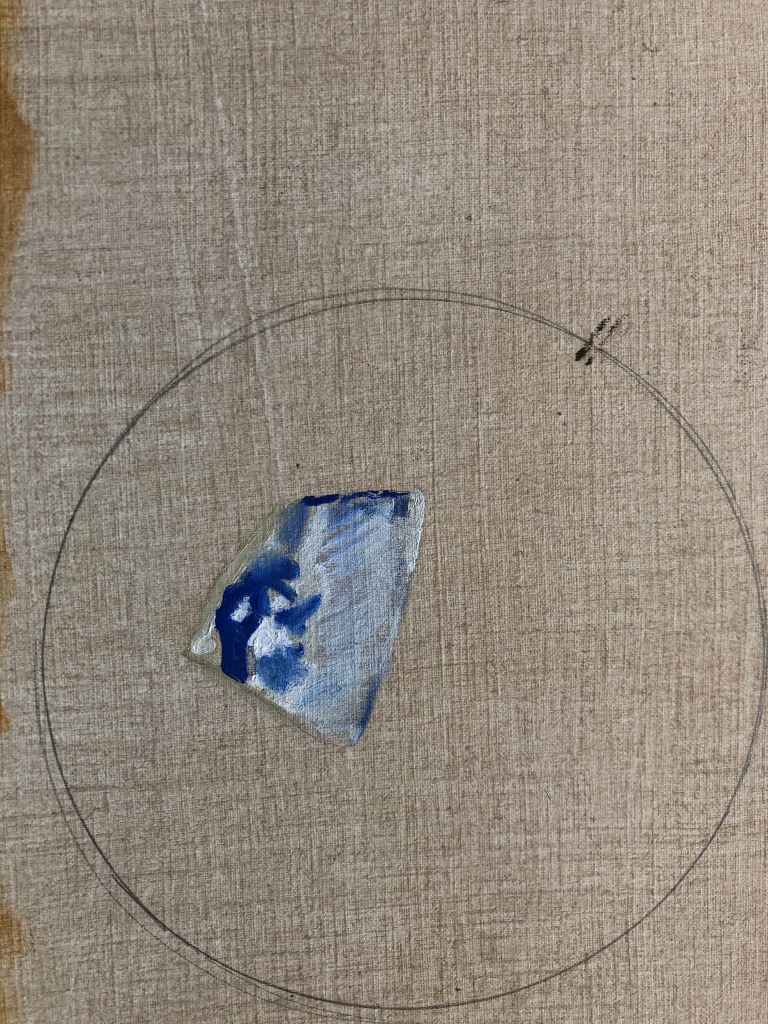
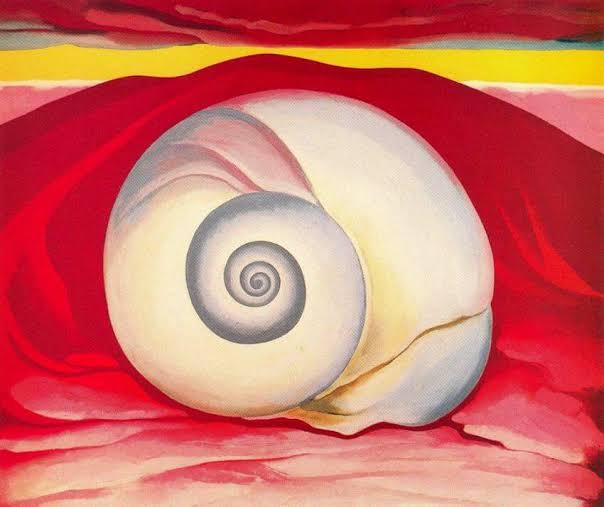
I remember reading about Georgia o Keefe, and what resonated was her love for nature, detail, colour and how she used scale so dramatically; she also collected bones, rocks, leaves…..and used it as material for her paintings. I want to work on the collection of dried tea bags I have.
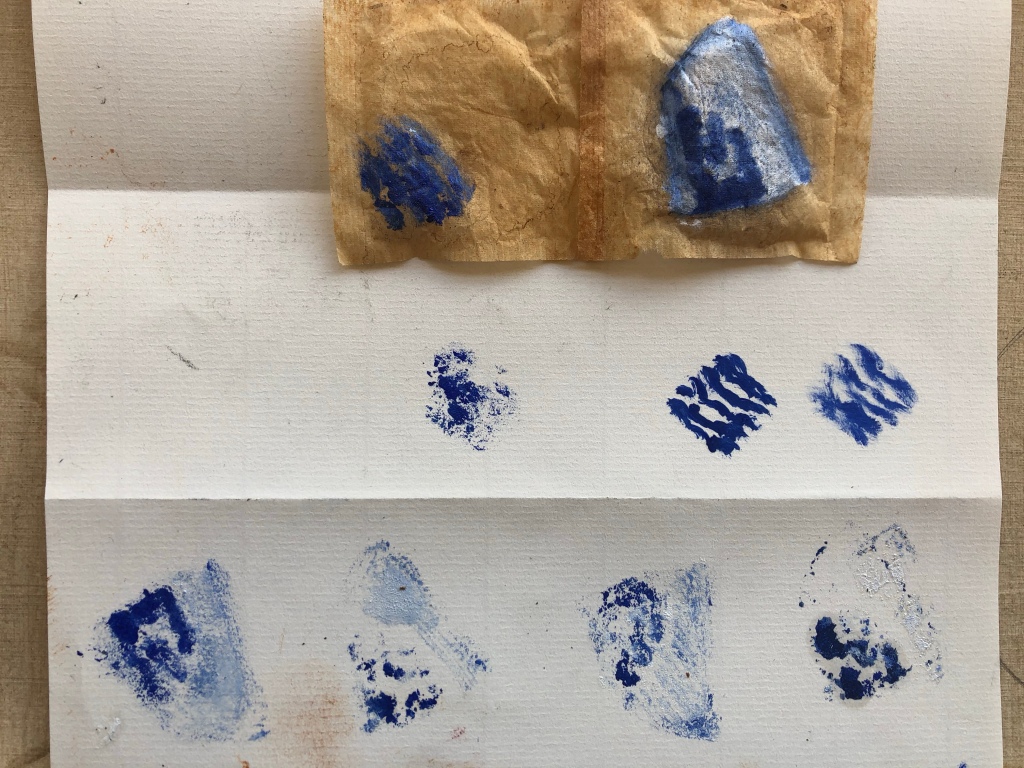

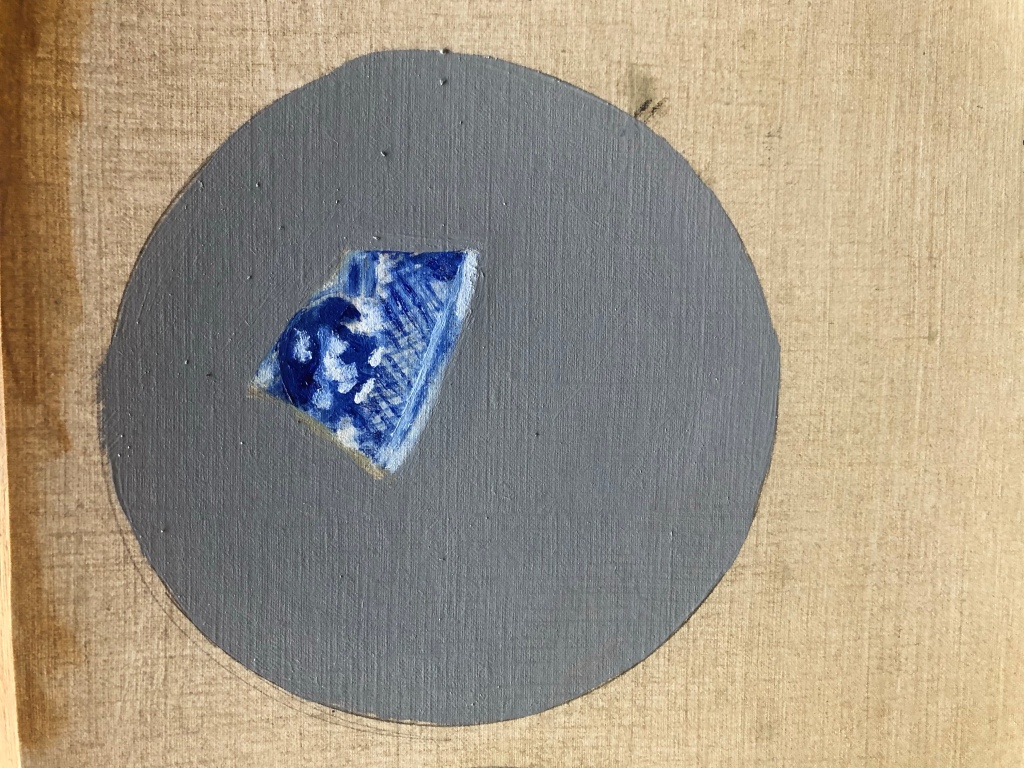
Day 7, 30 July 2020. Notebook: I think
I would like to continue with this practice. S Chobo’s words in the essay need to stay with me:
“Preparing your mind is important. In the end, there will be a great difference depending on whether you begin practice on a whim or after you have made a firm resolution. By all means you should keep the following points in mind...”
S Chobo, 1968
I want to be true to myself in terms of having subject matter that I relate to and to build on that process.
Language can be part of this process, a note book, found poems, comments, that accompanies the work.
The practice can be about the “how”, the what can be the found objects in landscape I currently find myself in.
I am thinking about a parallel project which I have to bring into my studies.
I enjoy the thinking that happens whilst I am busy with the process…those spaces in between was a good experience. I could still consider why I made circles and why I chose painting. It felt natural as a choice at that moment….
I think I should read more around exercise 1.5, Meditations. I have time before I need to submit this work on Friday 8 August 2020.
Repetition opened my mind to how I pay attention to things – and a confirmation that things will always be different and revealing the new. I am very aware of the way Western thinking almost juxtapose this idea.
I did not make a final collage – I will continue to make more small paintings and consider my options as I work on ideas for making and my PP.
Bibliography
Chobo,Saito , (1968), Kokoro No You Preparing your Mind translated essay on website https://sites.google.com/site/seishinkankyudo/kokoro-no-yoi (accessed online on 25 July 2020)
Dover, Caitlin (2015), How On Kawara made his date paintings tags to You tube video https://www.guggenheim.org/video/on-kawara-date-paintings (accessed online on 17July 2020)
Le Feuvre, L (ed.) (2010), Failure, Documents of Contemporary Art. ( Accessed online on SCRIBD, July – August 2020)
Tan, Fiona (2018) Fiona Tan Saint Sebastian (Works in Progress)//2001 In: Boon,Levine (eds.) Practice,Documents of Contemporarty Art, Cambridge. pp 162-165 as provided in OCA Study MaterialR